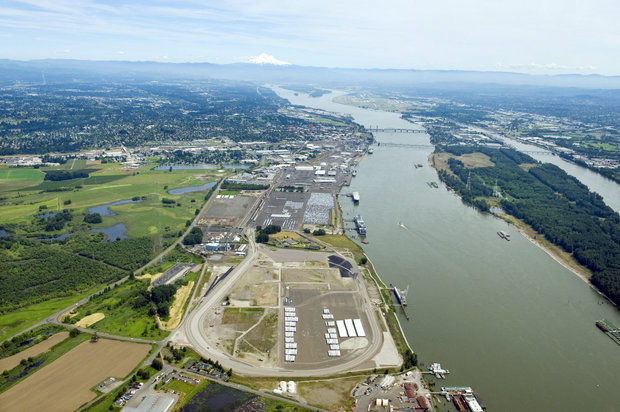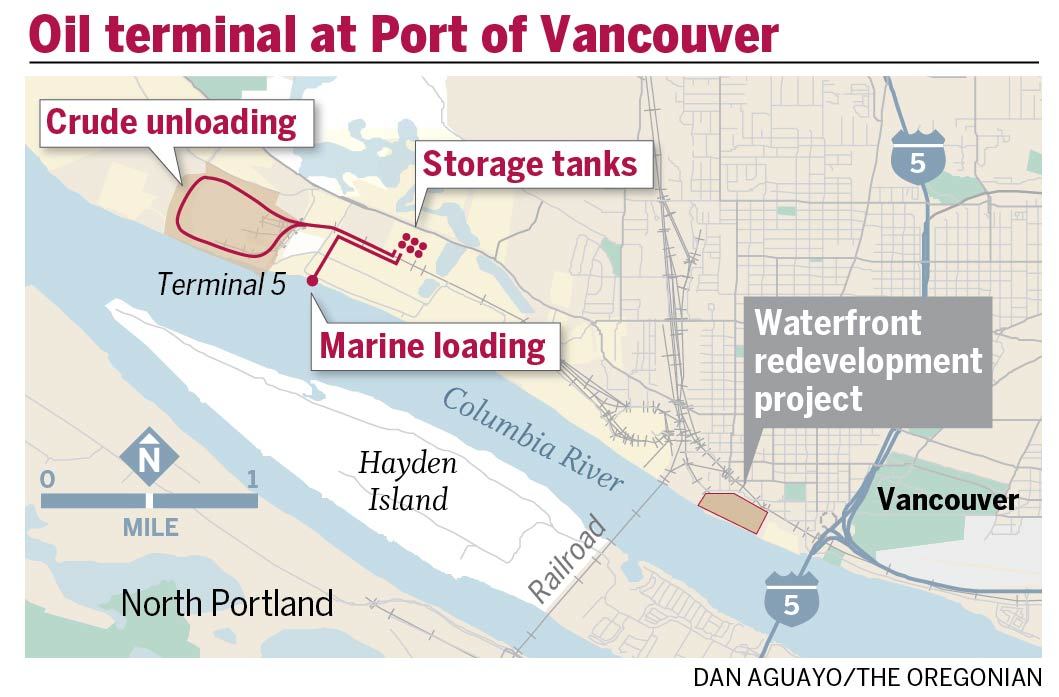
By Rob Davis | rdavis@oregonian.com
April 14, 2014 The Oregonian
A series of fiery explosions expanded opposition and heightened scrutiny of a Tesoro Corp. and Savage Cos. oil train terminal in Vancouver, Wash., a project that promises to be a bellwether for a growing number of facilities in development along the West Coast.
As we noted in a weekend story, a majority of Vancouver City Council members recently announced they opposed the $110 million terminal, which could process 360,000 barrels of oil daily.
Here are six things you should know about the terminal proposal.
1. It’s big.
It could unload four mile-long trains a day. It could move 131 million barrels of oil annually – seven times more than moved through Washington last year. It would allow Tesoro to move oil to its California refineries for less than the full rail journey would cost.
2. After three major oil train explosions, safety concerns are now driving the debate about the Vancouver terminal.
Building the biggest oil train terminal in the Pacific Northwest was always going to be controversial. But the string of fiery oil train wrecks turned an environmental debate about oil spills and fossil fuels into one about whether the project will put residents’ lives at risk.
Here’s how Jack Burkman, a three-term Vancouver city councilman, put it: “I’m stopped everywhere in town by people I never would’ve expected to be concerned about this. There’s too much lack of understanding. While the likelihood of an accident may be really, really low, the problems we’ve seen have been horrific. That’s what people are having a hard time wrapping their arms around.”
Todd Coleman, the Port of Vancouver’s executive director, put it this way: “(For) people who would’ve otherwise been neutral – fear is powerful.”
3. The string of accidents undercut arguments that something similar couldn’t happen in Vancouver.
When an oil train derailed in Quebec last July, exploding and killing 47 people, the port and Tesoro-Savage said something similar couldn’t happen in Vancouver. They said the BNSF Railway Co., which operates the main line through Vancouver, operated under stricter standards than the rail company in Quebec.
Then a major accident happened on a BNSF rail line in North Dakota in December.
 4. The Port of Vancouver has kept secret key details about the terminal.
4. The Port of Vancouver has kept secret key details about the terminal.
The port signed a lease in July 2013 with Tesoro-Savage but redacted information in the contract, keeping secret how many trains could go to the site each day.
The Oregonian has asked the port to release an unredacted copy of the lease. A spokeswoman Friday said the agency was re-considering its decision.
5. The Port of Vancouver is trusting that state and federal authorities will address oil train safety.
Uncertainties about tank car safety and crude oil composition led the Port of Portland to reject crude-by-rail terminals until safety gaps are addressed. But in Vancouver, the port is counting on stronger safety standards being in place by the time the project – worth $45 million over 10 years in lease revenue to the port – finishes a state permitting process expected to take a year or longer.
There’s no guarantee safety standards will be ready by the time the terminal is, though. Improving the country’s tank car fleet, for example, could take a decade.
Coleman, the Port of Vancouver official, said his agency may have approached the project differently and gotten safety questions answered up front if it had known more accidents would follow the first major accident last July.
6. The port says a required safety plan will be a backstop if others don’t address safety issues first. But it’s unclear how robust that plan must be.
If federal and state regulators don’t improve oil train safety, Coleman, the port official, said his agency will be able to step in and require key safety measures.
The basis? Two sentences from the port’s 429-page lease with Tesoro-Savage. It says little about what’s required. The lease says:
— Rob Davis
